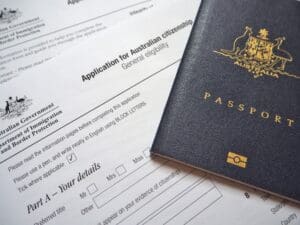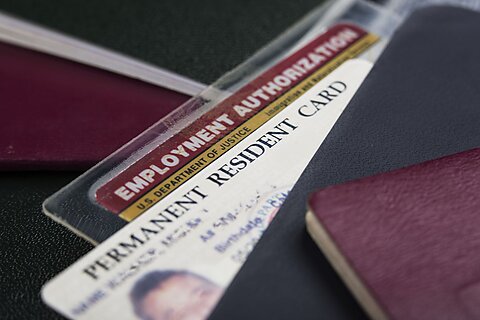Regardless of where you work, accidents can occur on the job. Injuries can happen in any position across all industries, whether a worker cuts their hand on a letter opener or falls off a piece of heavy machinery.
The National Security Council keeps spreading awareness about workplace incidents and how to reduce these incidents. According to Diversity Q, hundreds of people are involved in workplace accidents every year. Gladly, this is a guide on the most typical workplace injury causes, how they manifest themselves, and how employers can respond to ensure the safety and productivity of their staff.
An unforeseen event that causes property damage or personal injury at work is an accident. According to several experts, the term “incident” rather than “accident” is a more accurate way to characterize any unplanned event that leads to property damage, physical injury, or environmental harm or an event that has the potential to lead to such outcomes. In other words, accidents denote a situation beyond anyone’s control and would occur regardless of safety precautions or mitigation techniques.
How Frequent are Workplace Injuries?
Workplace injuries are persistent even though workplace safety rules are constantly improving. According to the National Security Council, workplace injuries occur every seven seconds. These wounds might be lethal or minor. According to statistics from the Bureau of Labor Statistics, published by the NSC, manufacturing, educational and health services, and government-related industries witnessed the highest number of preventable workplace injuries in 2019.
According to NSC, these injuries cause 105 million days of lost productivity annually as of 2019. “On average, this means that some employees can return to work reasonably quickly, but it also means that many employees have long-term crippling effects from their workplace injuries. According to NSC, workplace injuries may be more widespread than the data indicates. It’s also crucial to remember that these figures on occupational injuries only include cases that have been made public, according to NSC. Many employees who have accidents never report them, and as a result, they never get the financial aid or medical care they require to recover.
Most Common Types of Injuries:
Falls, Trips, and Slips: Falls, trips, and slips are among the most frequently reported types of injuries, accounting for, on average, 25% of reported claims annually. According to reports, on average, 50 persons pass away yearly or suffer injuries due to slipping, falling, or other accidents. Slips may happen due to a slick floor, leaks, materials and debris left in walkways, an uneven floor or working surface, protruding nails and boards, bunched floor mats or uneven carpeting, holes or depressions in working surfaces, step-risers on stairs of different heights, etc.
Cave-ins, being dragged into or caught in machinery or equipment or being squeezed or crushed between rolling, sliding, or moving items are examples of the category “caught in or between” hazards.
Hit By Moving Equipment: Struck by a moving vehicle, piece of heavy machinery, or another thing that rolls, slides, rotates, etc.
Accidents Involving Transportation and Vehicles: As previously indicated, these accidents primarily involve being struck by and crushed.
Explosions and Fire: These mishaps include gas and other fire- and explosion-producing substances.
Any act in which a person is mistreated, threatened, intimidated, or assaulted while working is called assault or workplace violence.
Structural collapse: This mishap happens when a permanent or temporary structure falls and injures workers. It might occur during a poorly designed demolition or dismantling procedure.
Chemical spillage happens when a harmful liquid is unintentionally and unplanned released into the environment.
Accidents involving electrical equipment fall under the category of electrical accidents. It might cause electrocution, electric burns, or electric shock.
Accidents specific to entering confined spaces include slips, trips, falls, suffocation, fire, explosion, and more.
The fact that all three leading causes of injuries can occur in almost any workplace may explain why they are regarded as the most frequent. The reasons below clarify how these nonfatal injuries could occur even in an office setting.
Excessive physical effort, such as pushing or lifting objects, or repetitive motion that stresses the muscles can lead to overexertion and body reactions. Slips, trips, and falls can happen on slick surfaces, going downstairs, or from ladders or other multi-level platforms. When a body part is crushed between two things, a person is struck by a falling or moving object, or in a similar situation, they may come into contact with objects and equipment.
How to Prevent these Accidents:
By implementing a comprehensive safety strategy, workplace accidents can be prevented most effectively. You and your staff may establish a safety culture and a focused accident prevention program with the help of preventative measures.
Frequent safety briefings and employee safety training promote safety awareness and education.
Use the proper lighting to produce a well-lit, visible workplace that will simplify your team’s identification and avoidance of threats.
To communicate safety threats, provide proper signs to clearly identify dangerous situations and potential dangers such as obstructions, spills, toxic materials, or other hazards.
When spills occur, rapidly contain them, and always keep cleanup supplies close by in your workspace.
Check frequently for impediments or spills that could be dangerous.
Provide the appropriate ventilation to stop your staff from breathing in dangerous chemicals or other foreign particles.
Ensure people wear appropriate clothing, such as hard hats and slip-resistant footwear, to prevent accidents.
After Math of the Accident:
NSC earlier brought up the fact that not all occupational accidents are reported. To ensure the continued safety of everyone concerned, a precise procedure should be followed when an event happens at work. The post-incident investigation process, according to NSC, entails several steps for the employer, such as securing the scene of the injury, locating witnesses, interviewing the worker and witnesses, documenting the scene with photos or video, finishing an investigation report, and implementing corrective measures to avoid similar incidents in the future.
After receiving medical care, the injured party should be able to follow up with the employer about time off work, compensation plans, and other employee benefits using established procedures. It is usually preferable to speak with a manager or human resources professional about what to do next after suffering a workplace injury.
Read more:
Workplace Accidents and How to Prevent Them
























